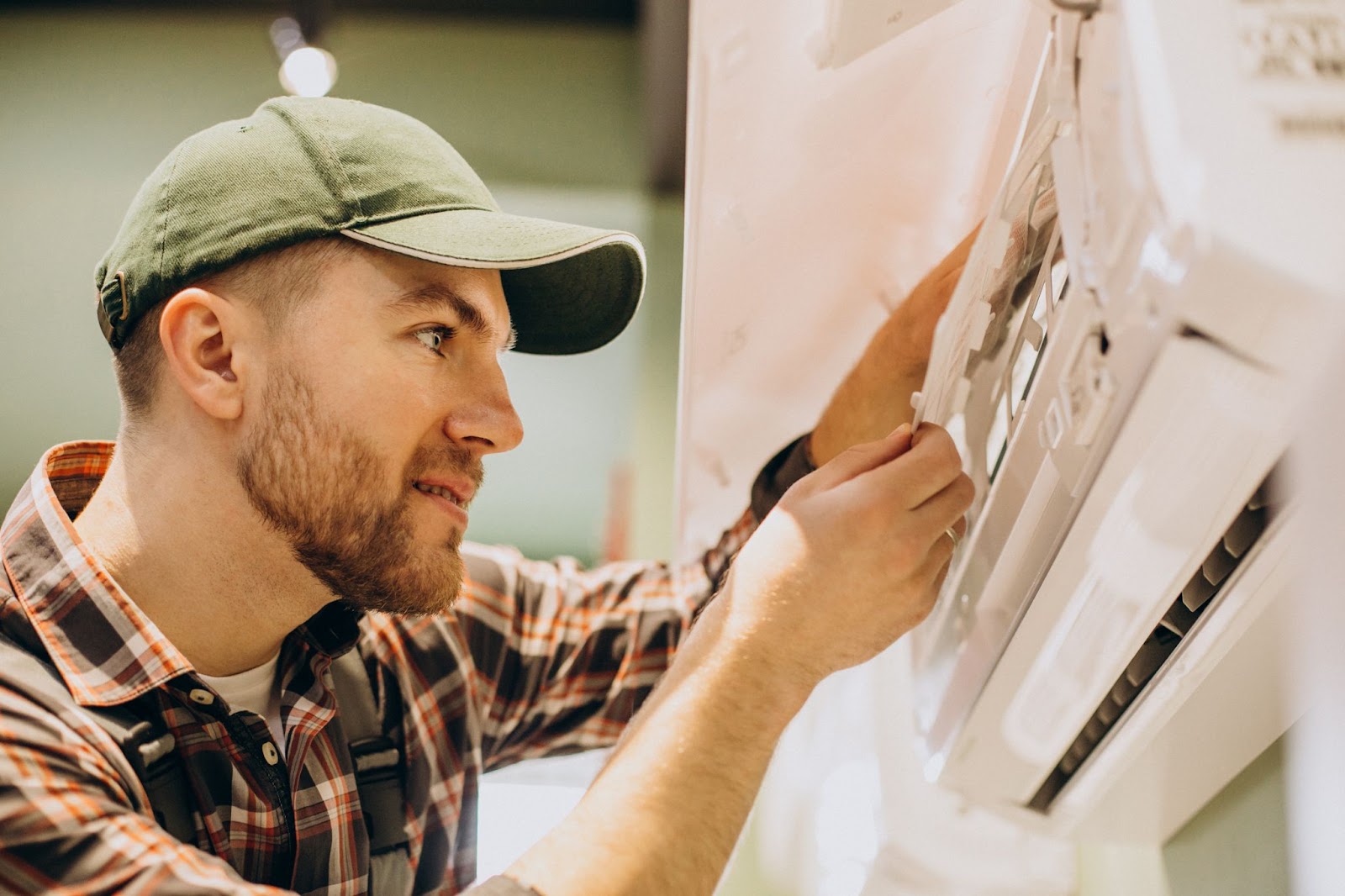Incorrect installation of an air conditioner is one of the surest ways of ensuring poor performance, a short life span of the equipment, and excess use of energy. On the contrary, some common installation mistakes will reduce effectiveness and increase energy bills, leading to more air conditioner repairs and discomfort in your house. This article discusses common AC installation mistakes and how to avoid them to ensure the unit delivers at its maximum.
1- Incorrect Sizing of the AC Unit
Choosing an air conditioner that is not appropriately sized for your space is perhaps the most typical error made in its installation. An undersized AC will barely keep up with cooling the area, increasing energy use and wear on a system. A unit that is too large cools a room too quickly, removing too little humidity, thus leaving a cool but not comfortable space.
How to avoid it: Let a professional technician assess your space for the right size of the AC unit. They would consider room size, insulation, and climate in recommending the right capacity that would serve efficiently and minimize the chances of air conditioner repairs due to overworking or underworking the system.
2- Poor Positioning of the Indoor and Outdoor Units
Where you place your AC units can make a huge difference in the overall performance of your air conditioner. If not placed correctly, the unit may obstruct airflow and lessen efficiency or be made to work harder than it should by creating the need for an increase in AC maintenance frequency.
- Indoor Unit: Improper indoor unit installation that is exposed to direct sunlight, near heat-producing appliances, or in a badly aerated corner will affect its performance.
- Outdoor Unit: Poor ventilation, placement too close to walls, and the unit’s proximity to obstacles such as plants or waste will constrict airflow and reduce cooling efficiency.
How to stay away from this: Make sure the interior unit is positioned in the middle, away from heat sources, and with enough ventilation. Select a well-ventilated, shaded spot for the outside unit that is ideally raised slightly to avoid dust and debris accumulation, which might hinder performance.
3- Skipping Proper Insulation of Ductwork and Refrigerant Lines
Other general installation mistakes with air conditioners include not insulating the ductwork and refrigerant lines. Poorly insulated ductwork may cause cooled air to escape before it ever reaches your living area, thus making the system harder and increasing overall energy consumption. Besides, uninsulated refrigerant lines can be subjected to condensation that may facilitate leaks and eventually damage.
To avoid it: Ductwork should be sealed and insulated, particularly when passing through unconditioned spaces such as the attic or crawl space. The lines of the refrigerant must also be wrapped with high-quality insulation to avoid loss of energy and further damage that may lessen the frequency of air conditioner maintenance or repair.
4- Improper Refrigerant Charge
The refrigerant charge refers to the amount of refrigerant in your system and is one of the most important components to take into consideration when dealing with the overall performance of the system. Too little or too much refrigerant charge can lead to a system that does not cool efficiently and will eventually waste energy and possibly cause damage. This is one of those basic installation mistakes that may require your air conditioner for frequent repairs.
How to avoid it: Allow the charging of the refrigerant by a qualified technician only. A qualified technician will measure the amount of refrigerant accurately and make adjustments that will match the specifications set by the manufacturer for smooth operation and the efficiency of your system.
5- Neglecting Post-Installation Testing
Extensive testing of the system must be done after the installation is complete, or else any flaws or defects in it may go unnoticed and might be very costly to repair later.
How to avoid it: The installer should do a full test of the system. It needs to be pre-tested for appropriate airflow, the right refrigerant charge, and testing of the thermostat to confirm proper temperature control. This will ensure the AC runs to its best capacity and reduce the possibility of future breakdowns.
Conclusion:
Proper installation of an AC means not spending more on frequent repairs, high energy consumption, and ultimately, a decrease in performance. Some things to be closely looked at during this process are the right size, proper placement, full testing of your unit, insulation, and refrigerant levels. These steps will make sure that your air conditioner works efficiently and lasts longer.



